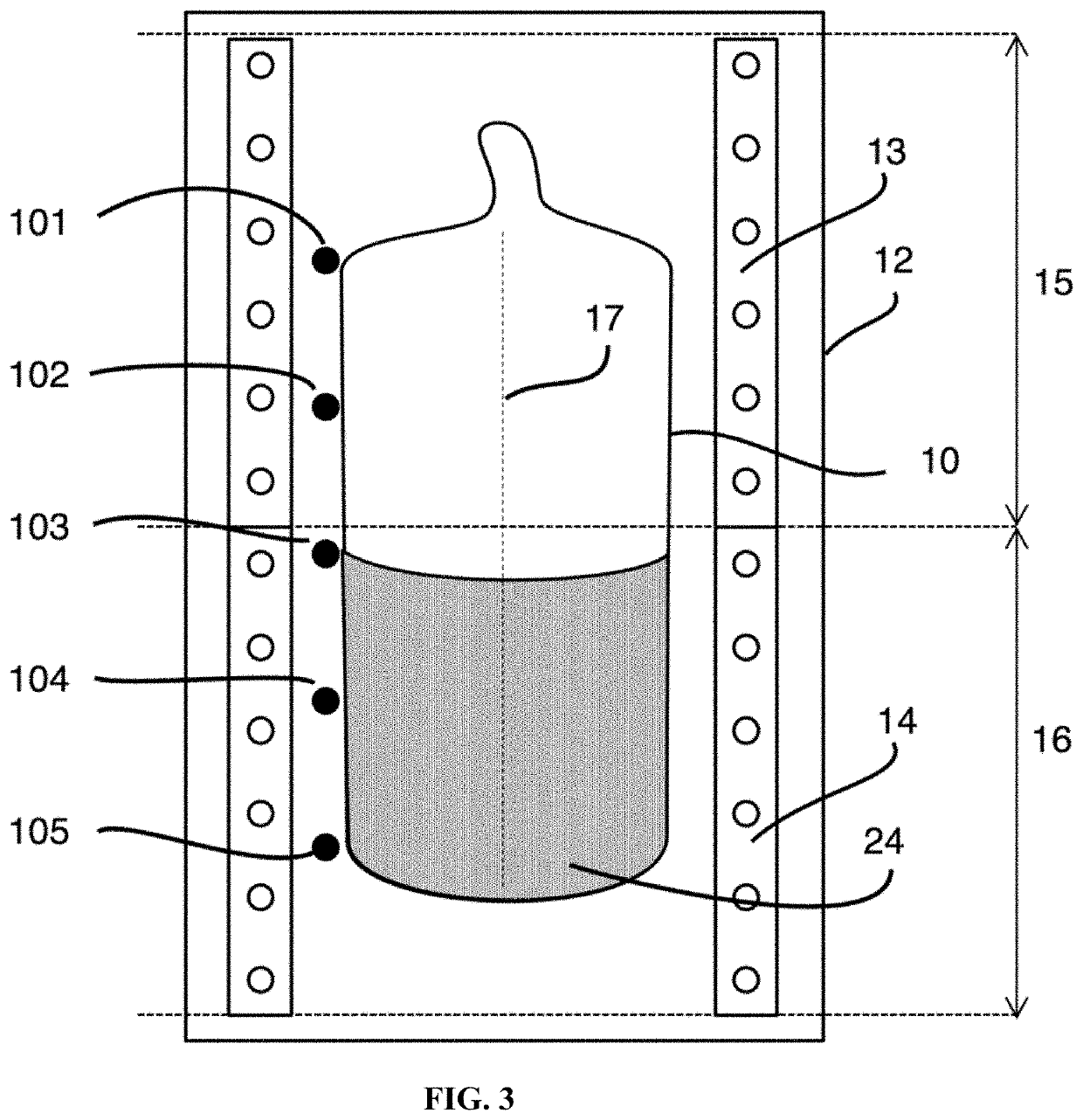Manufacturing process for striae-free multicomponent chalcogenide glasses via convection mixing
a chalcogenide glass, multi-component technology, applied in glass making apparatus, manufacturing tools, furniture, etc., can solve the problems of limiting the physical size of the glass that may be fabricated, the thermodynamic instability of the composition of chalcogenide glass with technologically useful properties, and the inability to manufacture optical quality glass in any size, so as to achieve the effect of greatly reducing the cycle time of glass synthesis
- Summary
- Abstract
- Description
- Claims
- Application Information
AI Technical Summary
Benefits of technology
Problems solved by technology
Method used
Image
Examples
example 1
f the Present Invention to Make Striae-Free and Crystallite-Free AsxSey Glass Without Mechanical Rocking or Stirring of the Glass Melt
[0033]The process of the present invention to make striae-free and crystallite-free AsxSey glass (where x and y are atomic percentages and x+y=100) without mechanical rocking or stirring of the glass melt is shown in FIG. 2, and the steps are detailed in Table 1 and demonstrated here by example as the fabrication of a chalcogenide glass comprising 39% atomic As and 61% atomic Se and having no observable optical inhomogeneity or striae. A total of 800 grams of elemental chemicals, arsenic and selenium, were loaded inside a quartz-silica ampoule 10 under an inert nitrogen gas atmosphere. The ampoule was connected to a vacuum pump, evacuated, sealed, and placed inside a fixed vertical cylindrical bore, or tube, furnace 12 having an upper furnace element 13 and a lower furnace element 14 respectively corresponding to a top heat zone 15 and a bottom heat z...
example 2
f the Present Invention to Make Striae-Free and Crystallite-Free As39S56Se5 Glass Without Mechanical Rocking or Stirring of the Glass Melt
[0051]Elemental chemicals arsenic, sulfur, and selenium sufficient to make 80 g of As39S56Se5 glass (percentages atomic basis) were placed inside an ampoule under a dry nitrogen atmosphere. The ampoule was heat sealed under vacuum using an oxygen-methane flame and placed inside a two-zone vertical tube furnace having an upper heating element and a lower heating element as shown in FIG. 2. The chemicals were melted, forming a glass melt, and cooled to form a solid glass according to the schedule in Table 4. During Step 1, when the top zone temperature was about 550° C. and the bottom zone temperature was about 800° C., a vigorous continual evaporation-reflux cycle could be observed visually and audibly. FIG. 8 shows graphically the temperature profiles of the furnace top zone 71, the furnace bottom zone 72, and the temperature difference between th...
example 3
Process to Make Arsenic Sulfide-Based (AsxSy) Glasses with Homogenization by Mechanical Agitation
[0055]The common prior art practice for synthesis of bulk chalcogenide glasses commonly employed in the industry is demonstrated here by example and comprises five steps: 1) melting / homogenization, 2) fining, 3) cooling, 4) quenching and 5) annealing (Sanghera et al., “IR fiber optics development at the Naval Research Laboratory,” SPIE, 3950, 180-185 (2000); Sanghera et al., “Applications of Chalcogenide Glass Optical Fibers at NRL,” J. Optoelectronics and Advanced Materials, 3 (No. 3), 627-640 (2001); Kokorina, V. F., Glasses for Infrared Optics, CRC Press, Inc. (1996); and Sanghera et al., “Development of Low-Loss IR Transmitting Chalcogenide Glass Fibers,” SPIE vol. 2396, 71-77 (1995)). FIG. 9 is a schematic overview of the glass melting and homogenization step used in the processes to synthesize infrared glasses by melt processing in the prior art (Examples 3, 4, and 5). The rocking ...
PUM
| Property | Measurement | Unit |
|---|---|---|
| temperature | aaaaa | aaaaa |
| temperature | aaaaa | aaaaa |
| temperature | aaaaa | aaaaa |
Abstract
Description
Claims
Application Information
 Login to View More
Login to View More - R&D
- Intellectual Property
- Life Sciences
- Materials
- Tech Scout
- Unparalleled Data Quality
- Higher Quality Content
- 60% Fewer Hallucinations
Browse by: Latest US Patents, China's latest patents, Technical Efficacy Thesaurus, Application Domain, Technology Topic, Popular Technical Reports.
© 2025 PatSnap. All rights reserved.Legal|Privacy policy|Modern Slavery Act Transparency Statement|Sitemap|About US| Contact US: help@patsnap.com



